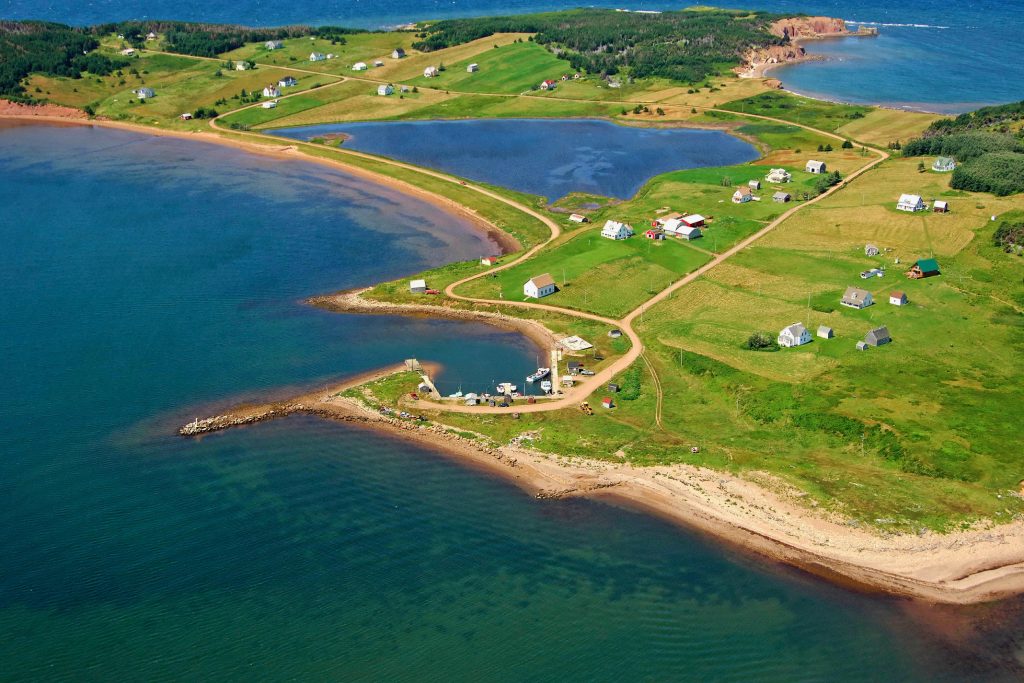Port Hood Island

Port Hood Island lies one mile off the west coast of Port Hood. Prior to circa 1819, Port Hood Island was a peninsula connected to the mainland by a low-lying, sandy isthmus. During the construction of the Fortress Louisbourg, the French operated a stone quarry on the western side of this peninsula. Fishermen eventually dug a small canal through the isthmus to provide direct access to the harbour from the north. Unfortunately, once this opening was created, storms and erosion began to increase the width of this channel and by the mid-19th century, this isthmus was eventually washed away.
The first permanent settlers on Port Hood Island were Captain David Smith, his wife Rebecca Lombard and their family who were United Empire Loyalists from Cape Cod, Massachusetts. Captain David Smith died tragically in February 1789 while out sealing on drift ice with his sons. Rebecca was left with the responsibility of providing for her young family. She and her sons obtained a land grant in 1792 and the Smith family flourished on Port Hood Island. Indeed, for many years, the island was referred to as Smith’s Island.
The Island was very much connected to the fishery and for many years this industry thrived. Captain David Smith’s son John was engaged in a business on the northern end of Port Hood Island that was taken over by his nephew John Smith. Joshua and Hezekiah Smith operated the business under the name of the Estate of John Smith but the partnership later dissolved. Joshua and his son Guy built a wharf, ice house, freezer and fish houses. They ran a general store and purchased and marketed large quantities of fish. Hezekiah also oversaw a thriving business known as H.A. Smith & Sons and constructed a freezer, lobster cannery and other buildings that were a source of employment for many in the area.
In 1883, John E. Burnham and Charles Morrill of Portland, Maine acquired property on the Island. The two men ran their lobster packing business under the name Burnham & Morrill. Alexander Gunn operated this factory for over fifty years.
In 1958, due in large part to the efforts of Port Hood Island native son, the Honourable Sidney Smith who was Secretary of State for External Affairs in Prime Minister John Diefenbaker’s government, construction began on a breakwater to Port Hood Island. Work was completed by October 1, 1960 but then disaster struck. A severe storm destroyed the roadway and vehicle traffic to the Island was no longer possible.
Even without the convenience of a fixed link to the mainland, Port Hood Island was a fairly self-sufficient community. Besides having its own church, school and a variety of businesses, Port Hood Island also had telephone service by 1910. Electricity came to the Island in 1950 and ships such as the S.S. Kinburn and M.V. Reo carried freight and passengers to the Island. A post office was established on Port Hood Island in 1865. The Island post office closed in 1968 but mail delivery continued until 1987.
As the years passed, an increasing number of residents made the choice to move from the Island so as to have better access to services. Today little evidence remains of the bustling hub of activity that once existed on Port Hood Island. Many of the old family homes still stand but are owned by people from away who value the Island for its tranquil setting. But some of the old Island families still own property there and even those who do not are inextricably drawn back to their Island home.
